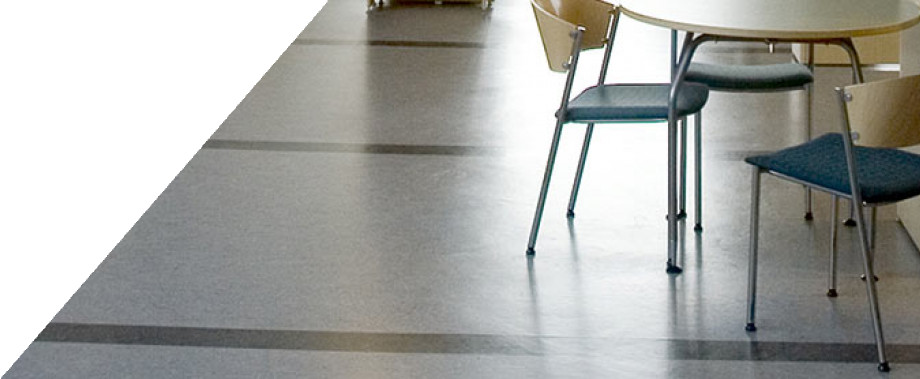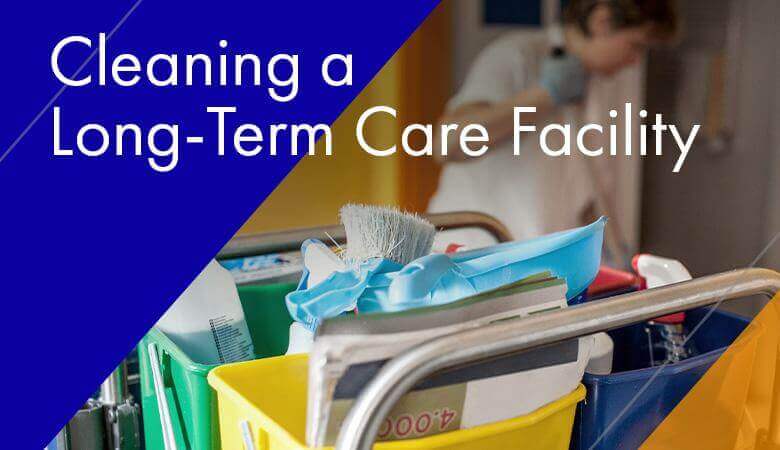Cleaning a Long-Term Care Facility: Challenges + Solutions
Cleaning professionals in nursing homes and assisted living facilities, also called long-term care (LTC) facilities, face unique challenges not found in other environments. Knowing what these challenges are and how to properly address them is crucial to keeping LTC facilities clean and safe for their residents.
These simple tips will help janitorial professionals keep resident rooms and common areas safe, clean and help lessen the spread of infectious diseases between both residents and employees.
- Determine the scope of work. Most cleaning companies will clean only resident rooms and common areas, not medical or care station areas. If additional services are required, this needs to be determined up front and will require more specialized cleaning.
- Understand the specific needs of the facility. Proper cleaning of an LTC facility is similar to what is required at daycare centers and schools. An LTC facility can be home to many infectious diseases, germs and bacteria not necessarily found in an office environment. Also, the residents in LTC facilities are generally older than those in an office and may be sick or have weakened immune systems, making them especially vulnerable to disease. Cleaning for health, then, becomes even more crucial in an LTC facility.
- Prepare for unique cleaning situations. Cleaning professionals in an LTC facility need to be prepared for unexpected cleaning situations such as resident “accidents,” and spills, which must be addressed immediately and sanitized thoroughly and with minimal embarrassment to the resident. It is also important to note here that since cleaners are in regular, daily contact with residents, even more so than doctors and nurses, they can develop relationships with the residents and get to know who is especially at risk; for example, those with memory loss and Alzheimer’s patients. Trustworthiness, therefore, is extremely important, and thorough background checks are crucial.
- Schedules are important. Cleaning schedules should revolve around times that are appropriate for activity at the facility. For example, mopping the cafeteria shouldn’t occur during meal times.
- Select the correct products. All-purpose cleaning products that require little training to use may be sufficient in an office environment but typically are not the correct choice for an LTC facility. Cleaning chemicals and disinfectants that can eradicate methicillin-resistant Staphylococcus aureus (MRSA) and C. difficile or norovirus, bacteria often found in an LTC are necessary to maintain health. Use of these chemicals, however, requires thorough training of cleaning staff.
- Disinfecting high-touch areas is of particular concern. Although disinfecting high-touch surfaces is a typical cleaning task in all environments, in an LTC facility, high-touch surfaces can be part of a resident’s daily life, so disinfecting them to prevent the spread of pathogens, takes on even greater importance and will ensure that residents and their families remain infection-free. High-touch areas at an LTC facility include, but are not limited to, doorknobs, light switches, handrails, tables, food trays, chairs, toilet handles, elevator buttons, the list goes on. Cleaning staff should consistently clean and disinfect these high-touch areas.
- Don’t neglect soft surfaces. Curtains, cushions and upholstered furniture can be a breeding ground for odor-causing bacteria but are difficult to launder. Using an EPA-registered product as a disinfectant/sanitizing spray will help kill bacteria on soft surfaces.
- Don’t forget floor care. Proper floor care is of utmost importance in an LTC facility. Finishes applied to hardwood floors must meet or exceed the Underwriter’s Laboratory (UL) requirements for slip resistance, and dirt and spills need prompt attention to prevent slips, trips and falls. Carpeting, on the other hand, cushions falls and acts an air filter trapping dust particles and other debris in its fibers. It must be routinely deep cleaned, however, for maximum benefit. Dirty carpeting will compress and harden over time, providing little cushioning. Using high-filtration vacuum cleaners along with an effective, low-moisture, hot-water extraction system protects air quality. In fact, a study conducted by Dr. Michael Berry, formerly with the U.S. Environmental Protection Agency and now a leading figure in the Cleaning Industry Research Institute, found that “the air quality over carpeting was better than it was over hard surface flooring.”
The decision to move a loved one to an LTC facility is a difficult one in many ways, and the safety and cleanliness of the environment is certainly one of the most important considerations. At 4M, we are dedicated to ensuring all of the facilities we clean are safe and germ-free by delivering the best, safe and innovative clean and service solutions for your business. Want to learn more? Give us a call or CLICK HERE to contact us.


